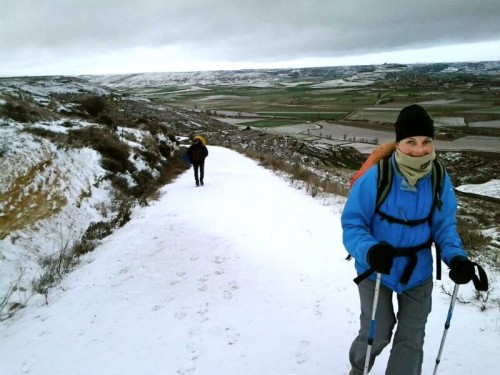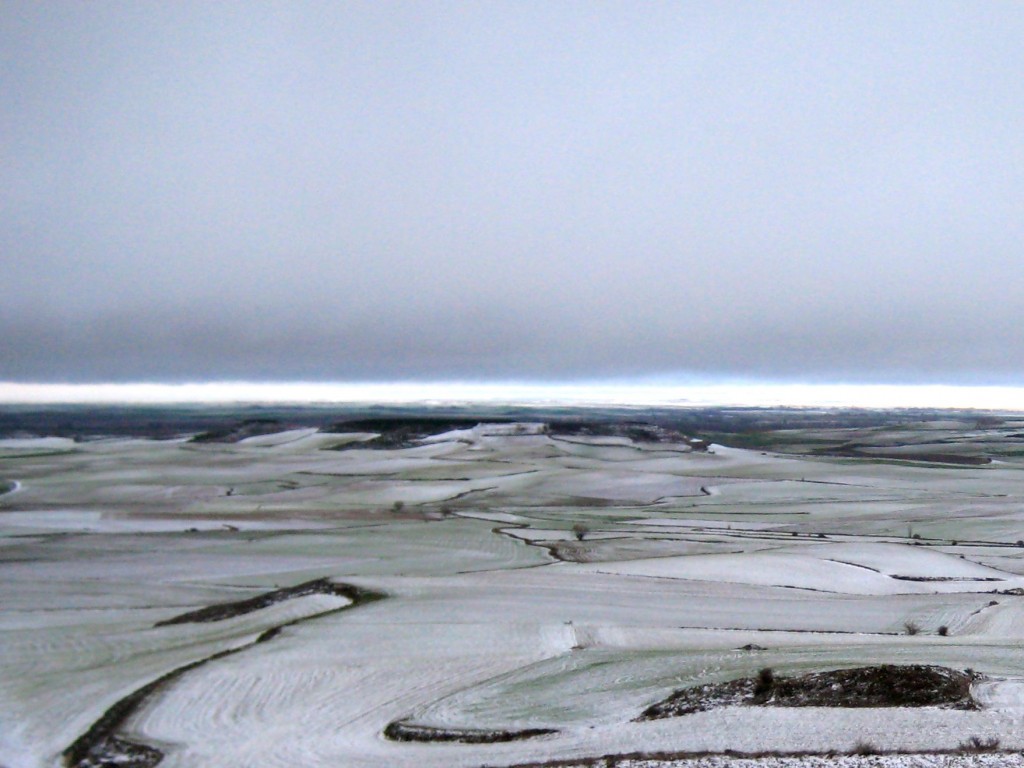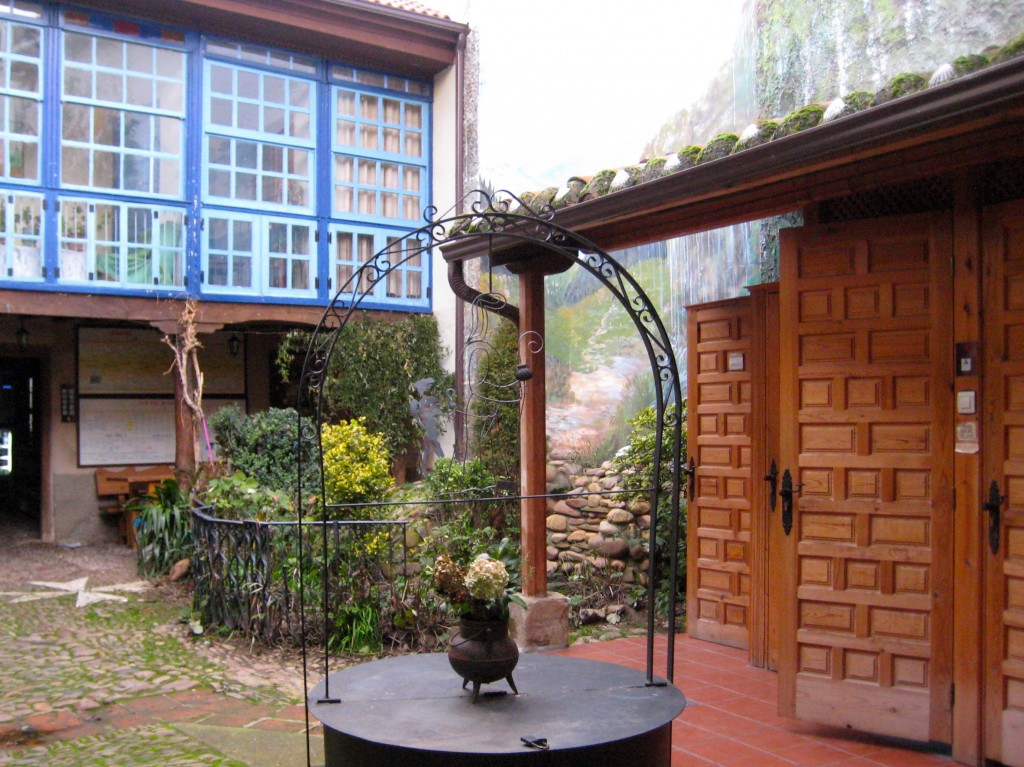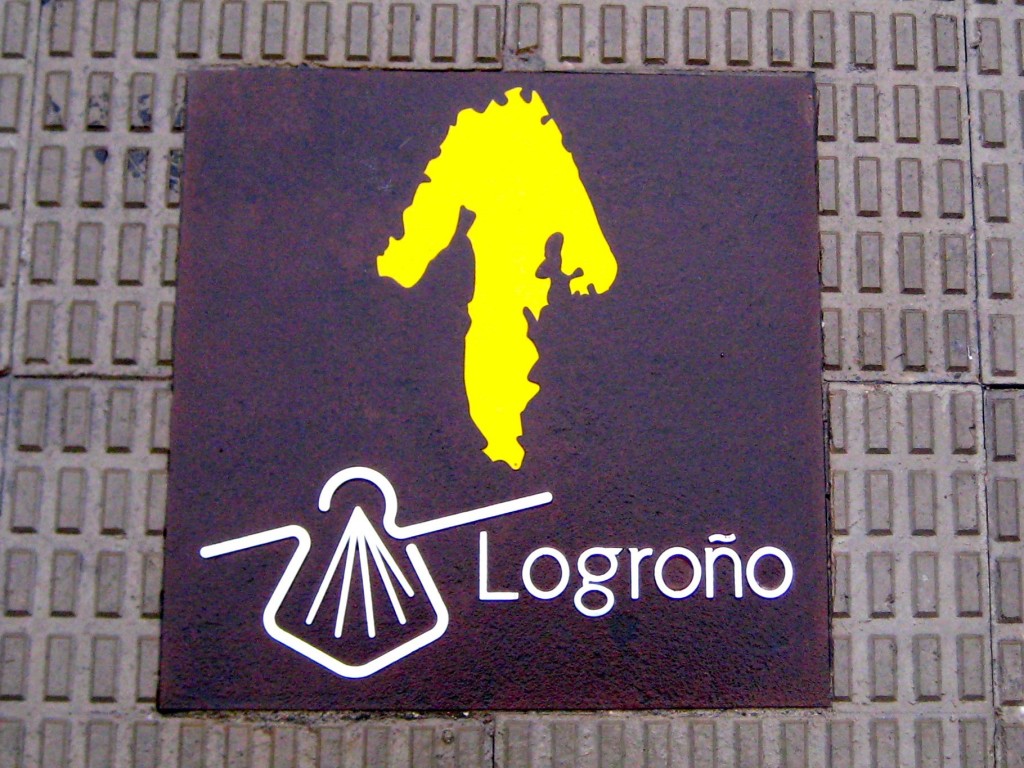This is a two-part post on what to expect for the Camino de Santiago in winter. Part I covers lodging and walking in winter.
If you’re here, you’re probably thinking of walking the Camino de Santiago in winter, so to answer your first question, yes, it is absolutely possible. Enjoyable even, if you’re a little bit tough and have adequate gear. I walked the French Way from January 12th to February 7th, 2013. The Pilgrims’ Office in Santiago provides detailed statistics of how many pilgrims arrive each day. The statistics confirmed for me before I left that I wasn’t insane to be setting off in January, so take a look at the dates you’re thinking of walking for reference. http://peregrinossantiago.es/eng/pilgrims-office/statistics/
There are two main issues to deal with in winter: the weather and availability of pilgrim inns (albergue).
I. Lodging in Winter
On the French Way, there are pilgrim inns open all year round, mainly the public ones (municipales). You won’t have much of a choice as to where you stay in winter if you’re looking to stay in the cheaper pilgrim inns. The legs of your journey will be more or less defined by where the open inns are, or in some cases, where the open inns with a bit of heating are. Sometimes this means a long day of 35 kilometers and sometimes it means a short day of 16 kilometers. Note that all the public inns in Galicia are open all year round.
Keep in mind that Christmas holidays in Spain run from December 24th through January 6th. There are even more albergues closed during these dates, so I chose to leave after January 6th (having the luxury of living in Spain and choosing when to start). I did read in guest books at various inns that there were people walking through the Christmas season, so it is probably possible if Christmas vacation is the only time you’ve got.
Don’t trust the Internet as to which places are open year-round. Each year different inns stay open, or an inn may be nominally open all year but closed for 10 days in January just when you arrive (as happened to me on several occasions). It’s better to call ahead to confirm if an inn is open and check with the innkeepers along the way as they usually know what’s open in the upcoming towns.
I was expecting lots of inns with no heat and no hot water, but it was not the case at all. In 26 days, I stayed at only two inns with no heat. In fact, the quality of the lodging was a powerful motivator during the day as I could be fairly certain that I would be able to take a hot shower when I got to my destination and would sleep warm and cozy. (I should note that at home I always turn off the heat at night and I often take cold showers voluntarily, so it doesn’t take a lot of heat to make me happy.)
I didn’t stay in any private pensiones or hotels, so I can’t speak to how much “high quality” lodging is available in winter. There was a pilgrim walking almost exactly the same route as my group who we never saw because he was staying only in hotels, so staying at higher-end lodging seems to be possible year-round as well.
II. Walking in winter weather
The French Way is extremely well-signed with yellow arrows everywhere, probably owing to the fact that it’s the most popular with loads of inexperienced walkers who get turned around easily. However, many of those arrows are painted on the pavement or on ground-level rocks. That means when it snows, they get covered up and you can get lost in the blink of an eye.
The Camino often runs near a paved highway of some sort, so if there is lots of snow, the best option is to walk along the highway. The innkeepers are also an invaluable source of information about alternate routes. Sometimes the alternate route is a little longer or a little uglier, but getting lost is worse.
Try to stay in a group on bad-weather days if you can. At least make sure that someone going to the same destination knows you intend to go there too so that if you don’t show up, someone will know you’re still out there.
There are fewer hours of daylight in winter, so keep it in mind when planning your day. Unless you’re planning to do 45-50km days, there is no reason to start walking before the sun comes up. Walking in the dark is another easy way to get lost. In summer, people get up at 5 AM to make sure they get a bed at their chosen destination, but in winter there is no need to worry about that. On the other hand, don’t dilly-dally too much along the way in winter because the sun goes down early, too.
None of this should scare you out of walking in winter. The French Way does not climb any significant altitude and is below the snow line most of the time. It’s also not very mountainous, so even if there is snow, you won’t be negotiating precipices and the like – just walking along a country road with snow on it. I have done some winter hiking, but I’m not a snow-and-ice expert in the least, and there was nothing I felt I couldn’t handle on the Camino in January.
The reward for walking in the low season is the small number of pilgrims. You get to know everybody and there is a real sense of community. There’s never a fight to use the kitchen or get a bed – in fact you can usually spread your stuff out over two beds if you like. The innkeepers love winter pilgrims because they say they’re always “real” pilgrims, not tourists.
As one innkeeper put it to me, “Tourists make demands. Pilgrims are thankful for a roof over their heads.”
Try the Camino in winter and you’ll find out whether you’re a pilgrim or a tourist.
Part II covers winter-specific Camino packing.






15 comments
Walking the Camino in winter really appeals to me and I have found your essay most informative and can genuinely say that it has fired my imagination and determination. I am planning to do this as a solo venture.. Do many people go it alone ?
Hi Tim, glad that the post was helpful. Almost everybody I met on the Camino was alone at the start. Each of us chose how we wanted to walk – alone or with others – but there were always pilgrims with whom to share the evening. If you need any additional advice, feel free to write a message through the contact form.
Hi Casey, Thanks for taking the time to write about your experiences. I look forward to sharing what you wrote, especially with my friend that I am doing the Camino with this mid-February, who happens to be a vegetarian too!
Hi Michael, glad the post was helpful. Your friend will find pre-cooked lentils and chick peas in jars at any supermarket – and they are a vegetarian’s friend on the Camino! You’ll find a lot of places that offer little more than pasta with tomato sauce for vegetarians but luckily many albergues have self-catering facilities. Enjoy! Any time is a great time for the Camino!
Hi Casey, I’m planning to go on the French , route in November, I found your tips really useful – thanks! I had no idea that the pilgrim hostels would not have blankets so I probably would not have lasted very long!!
Glad it was helpful, Richard! I’m sure you could have stayed warm somehow until you got your hands on a sleeping bag – where there’s a will, there’s a Way Buen camino!
Buen camino!
Fantastic read, thank you…I’m planning on going on a not too distant December ..getting lost scares me, but it’s all a part of the journey. I guess…
Buen camino, Debb! Don’t worry about getting lost. There are LOTS of yellow arrows on the ground, on signposts, on walls… But yes, if you get a little turned around, it is just part of the journey.
I am an experienced pilgrim to Santiago, and am considering walking the Camino Francais in November-December. Can anyone who undertook the journey last winter tell me which alburgues were open for them during this period? Any feedback would be greatly appreciated. I shall be starting in Burgos.
Hi Graham, the albergues that stay open from year to year tend to change. (I have stayed in touch with some innkeepers and they often make agreements between each other in low season about who stays open which months so that they have a chance to make enough money for it to be worth staying open and also get some time off.) The big public albergue in Burgos will definitely be open for your start and all the public albergues in Galicia will be open for the end. Ask in Burgos about the situation for the following legs. The year I did it open albergues were a little scarce for the 2-3 legs after Burgos. But November-December is more of a “shoulder” season than true “low” season, so I wouldn’t worry too much about the albergues – you should find plenty that are open in the main stops.
Casey,
This is so useful- thankyou. I imagine that the alburgue infrastructure is such that each will know which others will be open along the route. I have done the journey sufficient times to anticipate those which will definitely be shut at this time of the year, but I am confident that all will be well. Was, for instance, the new refuge at Hornillas open when you did the journey in winter? It is my usual stopover after leaving Burgos. How was the going for you on the Meseta? O’ Cebreiro? And roughtly how long did you give yourself for your journey? I am anticipating about five weeks from Burgos if the going is hard in some places. Thankyou again; any other advice would be greatly appreciated.
Coming out of Burgos, I went to Castrojeriz (40km). There was an albergue open between Burgos and Castrojeriz but I can’t remember if it was in Hornillos or Hontanas. We stopped and we couldn’t find the innkeeper and were feeling energetic, so we just kept going.
Sorry, Graham, I didn’t answer all of your questions. The meseta was OK – windy and quite muddy, but OK. In the O’Cebreiro ascent, it began snowing heavily as I was reaching the top (got zero views of what I have heard is a beautiful landscape), but it was late January. As for length, I did it in 26 days starting in Pamplona. The only day I did 40 km was Burgos – Castrojeriz and I think I did a couple of other 30 km+ days, but there were also a couple of days that I did only 12 or 15 kms because the next open albergue was way too far.
Thanks for the post. I’m hoping to do the French way in December this year. Some of the blogs I’ve read suggest that portions of the French way may be closed entirely. Was that your experience? Where did you start from?
Hi Alice,
It was not my experience that any part of the French Way was closed. I started in Pamplona to avoid the Pyrenees section (and because it was just so easy to take a bus from Bilbao to Pamplona and not worry about the logistics of getting to the very beginning of the French Way). As I say in the post, you will not be spoiled for choice in terms of albergues. You cannot assume that every 5 or 10 kilometers there will be an albergue where you can stop if you are tired, but if you are fit and plan as you go, finding out where the open albergues are, it’s no problem to do the French Way in December. Buen camino!